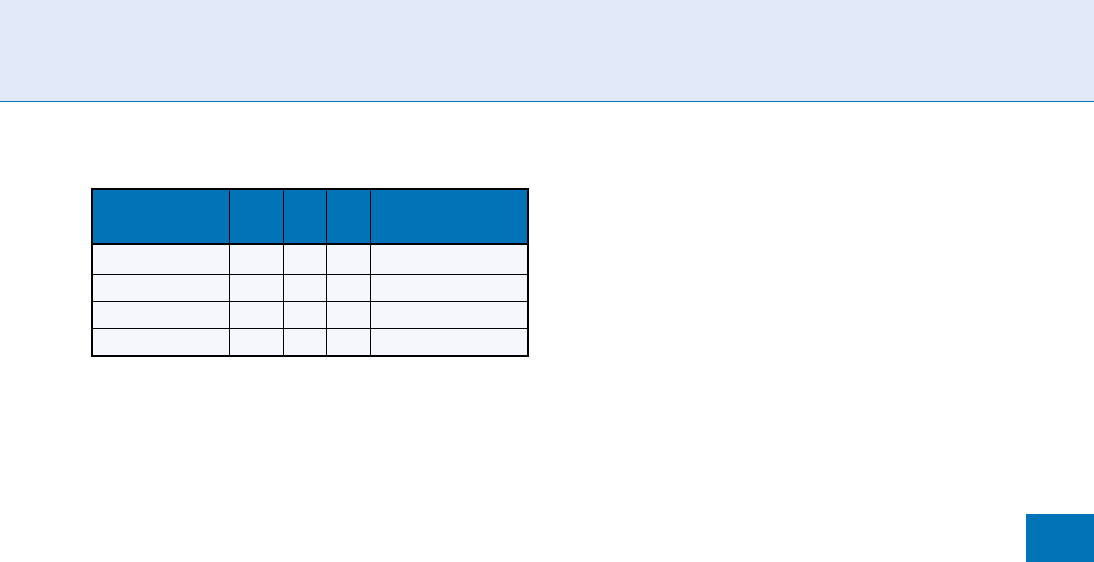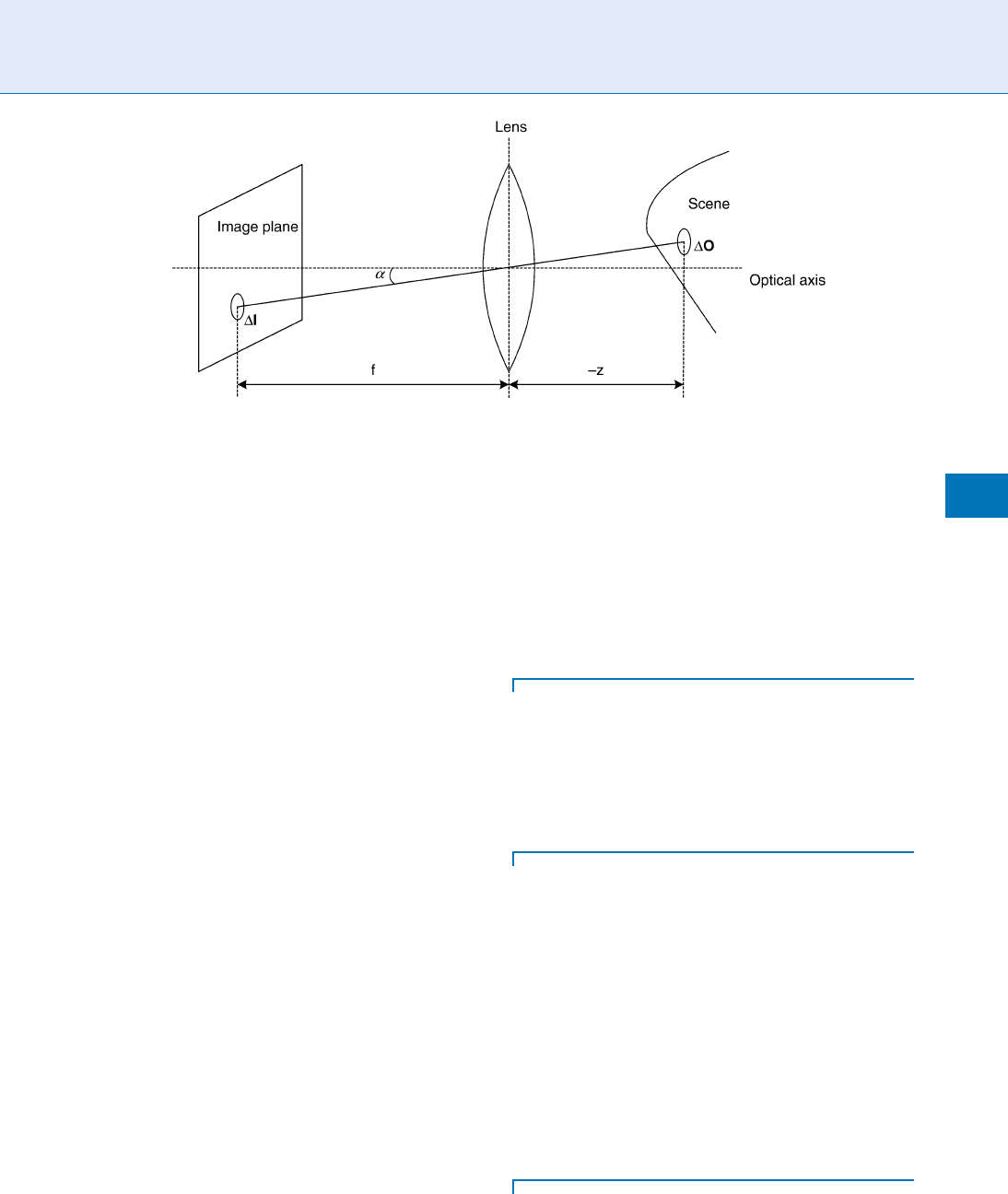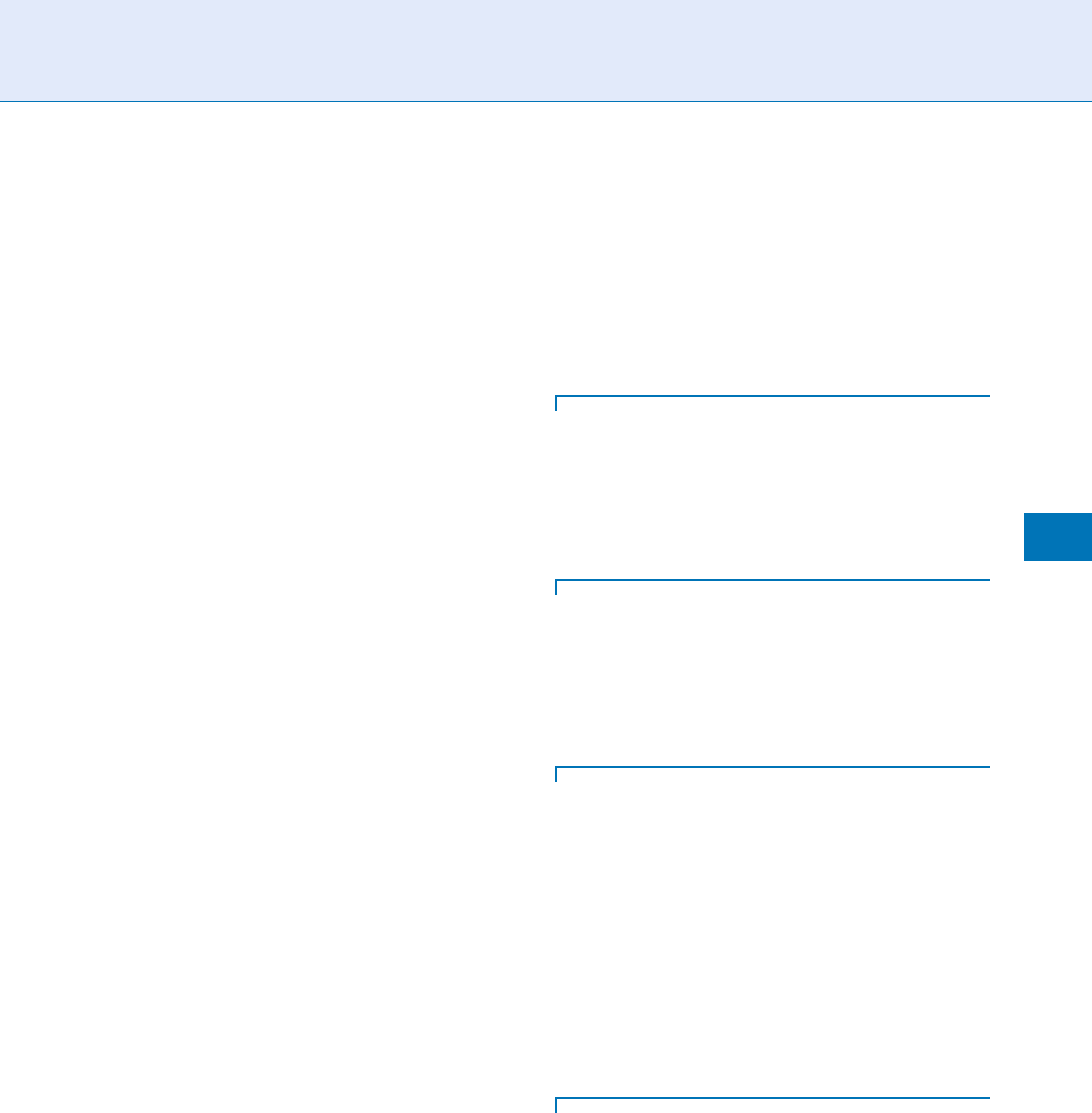Li S.Z., Jain A.K. (eds.) Encyclopedia of Biometrics
Подождите немного. Документ загружается.


training sample, and others form the testing set. The
respective recognition rates based on the different
databases are presented in Table 1. From the experi-
mental results, it can be seen that:
1. When the testing image set includes images under
varying illumination, the HE can be utilized to
improve the recognition performance as compared
to that without using any preprocessing procedure.
Illumination Compensation. Figure 4 Some experimental results based on the yale database. (a) original images,
(b) images processed by the HE, (c) images processed by the BHE, (d) images processed by the introduced algorithm.
Illumination Compensation. Figure 5 Some experimental results based on the AR database. (a) original images,
(b) images processed by the HE, (c) images processed by the BHE, (d) images processed by the introduced algorithm.
720
I
Illumination Compensation

However, the improvement is very slight in some
cases, e.g., for the Yale database.
2. The BHE or the introduced algorithm can improve
the recognition rates significantly. The BHE leads
to an improvement varying from 29.9 to 45.4%,
and in the case of the introduced algorithm it varies
from 53.3 to 62.6%. In other words, these two
methods are both useful in eliminating the effect
of uneven illumination on face recognition. In
addition, the introduced algorithm can achieve
the best performance level of all the methods used
in the experimen t.
3. The BHE method is very simple and does not
require any prior knowledge. Compared to the
traditional local contrast enhancement methods
[5], its computational burden is for less. The
main reason for this is that all the pixels within a
block are equalized in the process, rather than just a
single pixel, as in the adaptive block enhancement
method. Nevertheless, as in the case of the tradi-
tional local contrast enhancement methods, noise
is amplified after this process.
4. If the images processed by the HE are adopted
to estimate the illumination category, the cor-
responding recognition rates using the different
databases will be lowered. This is because variations
between the images are affected not only by the
illumination, but also by other facto rs, such as
age, gender, race, and makeup. The illumination
map can eliminate the distinctive personal infor-
mation to the extent possible, while keeping the
illumination information unchanged. Therefore,
the illumination category can be estimated more
accurately, and a more suitable illumination mode
is selected.
The reconstructed facial images using the intro-
duced algorithm appear to be very natural, and display
great visual improvement and lighting smoothness.
The effect of uneven lighting, including shadows, is
almost eliminated. However, if there are glasses or a
mustache, which are not Lambertian surface, in an
image, some side effects may be seen under some
special light source models. For instance, the glasses
may disappear or the mustache may become faint.
Summary
This essay discussed a model-based method, which can
be used for illumination compensation in face recog-
nition. For a query image, the illumination category is
first evaluated, followed by shape normalization, then
the corresponding lighting model is used to compen-
sate for uneven illumination. Next, the reconstructed
texture is mapped backwards from the reference
shape to that of the original shape in order to build
an image under normal illumination. This lighting com-
pensation approach is not only useful for face recogni-
tion when the faces are under varying illumination,
but can also be used for face reconstruction. More im-
portantly, the images of a query input are not required
for training. In the introduced algorithm, 2D face shape
model is adopted in order to address the effect of differ-
ent geometries or shapes of human faces. Therefore, a
more reliable and exact reconstruction of the human
face is possible, and the reconstructed face is under
normal illumination and appears more natural visually.
Experimental results revealed that preprocessing the
faces using the lighting compensation algorithm greatly
improves the recognition rate.
Related Entries
▶ Face Recognition, Over view
References
1. Adini, Y., Moses, Y., Ullman, S.: Face recognition: the problem
of compensating for changes in illumination direction. IEEE T.
Pattern Anal. 19(7), 721–732 (1997)
2. Turk, M., Pentland, A.: Eigenfaces for recognition. J. Cognitive
Neurosci. 3, 71–86 (1991)
3. Bartlett, M.S., Movellan, J.R., Sejnowski, T.J.: Face recognition by
independent component analysis. IEEE T. Neural Networ. 13(6),
1450–1464 (2002)
4. Yale University [Online]. Available at: http://cvc.yale.edu/
projects/yalefacesB/yalefacesB.html
5. Pizer, S.M., Amburn, E.P.: Adaptive histogram equalization and
its variations. Comput. Vision Graph. 39, 355–368 (1987)
Illumination Compensation. Table 1 Face recognition
results using deferent preprocessing methods
Recognition
rate (%) None HE BHE
The introduced
method
YaleB 43.4 61.4 77.5 99.5
Yale 36.7 36.7 80.0 90.0
AR 25.9 37.7 71.3 81.8
Combined 30.1 32.2 60.0 92.7
Illumination Compensation
I
721
I

6. Zhu, J., Liu, B., Schwartz, S.C.: General illumination correction
and its application to face normalization. In proceedings of the
IEEE International Conference on Acoustics, Speech, and Signal
Processing, vol. 3, pp. 133–136. Hong Kong, China, (2003)
7. Xie, X., Lam, K.M.: Face recognition under var ying illumination
based on a 2D face shape model. Pattern Recogn. 38(2), 221–230
(2005)
8. Xie, X., Lam, K.M.: An efficient illumination normalization
method for face recognition. Pattern Recogn. Lett. 27(6),
609–617 (2006)
9. Zhao, J., Su, Y., Wang, D., Luo, S.: Illumination ratio image:
synthesizing and recognition with varying illuminations. Pattern
Recogn. Lett. 24(15), 2703–2710 (2003)
10. Liu, C., Wechsler, H.: A shape- and texture-based enhanced
fisher classifier for face recognition. IEEE T. Image Process.
10(4), 598–608 (2001)
11. Goshtasby, A.: Piecewise cubic mapping functions for image
registration. Pattern Recogn. 20(5), 525–533 (1987)
12. Belhumeur, P.N., Hespanha, J.P., Kriegman, D.J.: Eigenfaces vs.
Fisherfaces: recognition using class specific linear projection.
IEEE T. Pattern Anal. 19(7), 711–720 (1997)
13. Yale University [Online]. Available at: http://cvc.yale.edu/
projects/yalefaces/yalefaces.html
14. Martinez, A.M., Benavente, R.: The AR face database, CVC
technical report #24 (1998)
Illumination Normalization
▶ Illumination Compensation
Image Acquisition
▶ Image Formation
Image Capture
▶ Biometric Sample Acquisition
Image Classification
▶ Image Pattern Recognition
Image Enhancement
The use of computer algorithms to improve the quality
of an image by giving it higher contrast or making it
less blurred or less noisy.
▶ Fingerprint Recognition, Overview
▶ Skull, Forensic Evidence of
Image Formation
XIAOMING PENG
College of Automation, University of Electronic
Science and Technology of China, Chengdu,
Sichuan, China
Synonym
Image acquisition
Definition
Image formation is the process in which three-
dimensional (3D) scene points are projected into
two-dimensional (2D) image plane locations, both
geometrically and optically. It involves two parts. The
first part is the geometry (derived from camera models
assumed in the imaging process) that determines
where in the image plane the projection of a scene
point will be located. The other part of image forma-
tion, related with radiometry, measures the brightness
of a point in the image plane as a function of illumina-
tion and surface properties.
Introduction
Common visual images result from light intensity var-
iations across a two-dimensional plane. However, light
is not the only source used in imaging. To unde rstand
how vision might be modeled computationally and
replicated on a computer, it is important to under-
stand the image acquisition process. Also, understand-
ing image formation is a prerequisite before one could
solve some complex computer vision tasks, such as
722
I
Illumination Normalization

▶ camera, ▶ calibration and shape from shading. There
are many types of imaging devices, ranging from
biological vision systems (e.g., animal eyes) to video
cameras and medical imaging machines (e.g., a Magnet-
ic Resonance Imaging (MRI) scanner). Generally, the
mechanisms of image creation vary across different
imaging systems and as a result, it is not possible for
this entry to cover all these mechanisms. In fact, the
author confines the discussion of image formation pro-
cess to a widely-used type of camera, the television
camera in the v isual spectrum. The reader, who is
interested in image formation of other ty pes of imaging
devices might be referred to [1] for medica l image
formation, [2] for synthetic aperture radar (SAR)
image formation, [3] for infrared image formation,
and [4] for acoustic image for mation. The image for-
mation process of a television camera involves two
parts. The first part is the camera geometry that deter-
mines where the projection of a scene point in the
image plane will be located; the other part measures
the amount of received light energy in individual pixels
as the result of interaction among various scene surface
material and light sources.
The Perspective Projection Camera
Geometry
Some commonly-used geometric camera models
include the perspective camera model, the weak-
perspective camera model, the affine camera model,
and the orthographic camera model. Among them, the
perspective camera model is the most popular. In par-
ticular, an idealized model that defines perspective
projection is the pinhole camera model, in which rays
of light pass through a ‘‘pinhole’’ and form an inverted
image of the object on the image plane. The geometry
of the device is depicted in Fig. 1.
In Fig. 1, the optical center C coincides with the
pinhole; the dotted vertical line perpendicular to the
image plane is the optical axis; the intersection of
the optical axis with the image plane is the principal
Image Formation. Figure 1 The perspective projection camera geometry.
Image Formation
I
723
I

point U
0
; the focal length f is the distance between
the optical center C and the principal point U
0
.(Itis
assumed that the camera is focused at infinity.) The
projection is formed by an optical ray, which is reflected
from a 3D scene point X ¼ðx; y; zÞ
T
(where T denotes
transpose) and passes through the optical center C and
hits the 2D image plane at the point U ¼ðu; vÞ
T
. Note
that three coordinate systems are used in Fig. 1. The
scene point X is expressed in the world coordinate
system, which generally is not coincident with the
camera coordinate system. The latter has the optical
center C as its origin and its Z-axis is aligned with the
optical axis. The alignment of these two coordinate
systems can be performed by an Euclidean transforma-
tion consisting of a 3 3 rotation matrix R and a 3 1
translation vector, t. The projected point U on the
image plane can be expressed in pixels in the image
plane coordinate system, whose origin is assumed as
the lower left corner of the image plane. Expressing
X ¼ðx; y; zÞ
T
in the homogeneous form as
~
X ¼
ðx; y; z; 1Þ
T
, the coordinates of U are given as [5]
u ¼
m
1
~
X
m
3
~
X
u ¼
m
2
~
X
m
3
~
X
(
ð1Þ
where m
1
, m
2
, and m
3
are the three transposed rows
of the 3 4 perspective projection matrix, and
M ¼ KðR=TÞ where ‘‘
’’ denotes the dot product
operation.
The 3 3 matrix K in the perspective projec-
tion matrix M contains the intrinsic parameters of
the camera and can be expressed as
K ¼
a a cot y u
0
0
b
sin y
v
0
00 1
2
4
3
5
; ð2Þ
where a and b are the scale factors of the image plane
(in units of the focal length f ), y is the skew (it is the
angle between the two image axis), and (u
0
, v
0
)
T
are
the coordinates of the principal point. These five
intrinsic parameters can be obtained through camera
calibration.
It is worth pointing out that altho ugh the pinhole
camera model is mathematically convenient, it is not
the case with real cameras that are equipped with real
lenses. The more realistic model of real lenses includes
the radial distortion, a type of aberration that bends
the light ray more or less than in the ideal case.
As a consequence, the image formed is more or less
distorted. Once the image is undistorted, the camera
projection can be formulated as a projective projection.
The Radiometric Aspects that
Determine the Brightness of an
Image Point
A television camera measures the amount of received
light energy in individual pixels as the result of inter-
action among various materials and various sources.
The value measured is informally called brightness (or
gray level). Radiometry is a branch of physics that deals
with the mea surement of the flow and transfer of
radiant energy. It is an useful tool to establish the
relationship between the brightness of a point in the
image plane and the radiant energy the point received.
Two definitions in radiometry, the radiance and irradi-
ance, will be useful in the following explanations. Radi-
ance is defined as the power of light that is emitted from
an unit surface area into some spatial angle. The unit
of radiance is W m
2
sr
1
(watts per square meter per
steradian). Irradiance is defined as the amount of en-
ergy that an image -capturing device gets per unit of an
efficient area of the camera. Gray-level of image pixels
are quantized estimates of image irradiance. The unit
of irradiance is W m
2
(watts per square meter).
Consider the relationship between the irradiance E
measured in an infinitesimal image patch DI and the
radiance L produced by an infinitesimal scene patch
DO (Fig. 2). In Fig. 2, a lens with focal length f is placed
at the coordinate origin and the infinitesimal scene
patch DO is at distance z from the lens. The off-axis
angle spans between the optical axis and the line con-
necting DO with DI. As given in [6],
E ¼ L
p
4
d
f
2
cos
4
a; ð3Þ
where d is the diameter of the lens. Equation (3) shows
that the image irradiance is proportional to the scene
radiance.
As the image irradiance is a result of light reflection
from scene objects, the ability of different materials to
reflect light needs to be described. The most general
model for this purpose is the bi-directional reflectance
distribution function (BRDF), which describes the
brightness of an elementary surface patch for a specific
material, light source, and viewer directions. For most
practically applicable surfaces, the BRDF remains
724
I
Image Formation

constant if the elementary surface patch rotates along
its surface normal. For a Lamber tian surface (also
called ideal diffuse surface), which reflects light energy
in all directions (and the radiance is constant in all
directions) the BRDF is given as r/p, w here r is the
albedo of the surface.
Summary
Mechanisms of image formation vary across different
types of imaging devices. The image formation process
is explained both geometrically and optically of the
television camera. The projected location of a 3D
scene point onto the 2D image plane is dependent on
the camera geometry, and the brightness of an image
pixel is determined by the interaction among various
material and various sources.
Related Entries
▶ Camera models
▶ Radiometri c calibration
References
1. Webb, S.: The Physics of Medical Imaging. Taylor & Francis,
London (1988)
2. Burns, B.L., Cordaro, J.T.: SAR image formation algorithm that
compensates for the spatially variant effects of antenna motion.
Proc. SPIE 2230, 14–24 (1994)
3. Foulkes, P.W.: Towards infrared image understanding. Ph.D.
Thesis, Department of Engineering Science, Oxford University
(1991)
4. Murino, V., Trucco, A.: A confidence-based approach to enhanc-
ing underwater acoustic image formation. IEEE Trans. Image
Process. 8(2), 270–285 (1999)
5. Forsyth, D.A., Ponce, J.: Computer Vision: A modern Approach.
Prentice Hall, New Jersey (2003)
6. Sonka, M., Hlavac, V., Boyle, R.: Image Processing, Analysis, and
Machine Vision, 2nd edn. Brooks/Cole, California (1998)
Image Formation Process
▶ Face Sample Synthesis
Image Morphology
Morphological image processing is a theoretical model
for digital image processing built upon lattice theory
and topology. Morphological operators or filters rely
only on the relative ordering of pixel values, not on
their numerical values, and are suited especially to the
processing of binary and grayscale images.
▶ Footwear Recognition
Image Pattern Classification
▶ Image Pattern Recognition
Image Formation. Figure 2 The relationship between image irradiance E and scene radiance L.
Image Pattern Classification
I
725
I

Image Pattern Recognition
JIAN YANG,JINGYU YANG
School of Computer Science and Technology, Nanjing
University of Science and Technology, Nanjing, China
Synonyms
Image classification; Image pattern classification;
Image recognition
Definition
Image pattern recognition is the problem of exploring
how to recognize image patterns. An image pattern
recognition system generall y consists of four parts: a
camera that acquires the image sam ples to be classified,
an image preprocessor that improves the qualities of
images, a feature extraction mechanism that gains dis-
criminative features from images for recognition, and a
classification scheme that classifies the image samples
based on the extracted features.
Introduction
Image is the most important pattern perceived everyday.
A lot of biometric patterns, such as faces, fingerprints,
palmprints, hands, iris, ears, are all shown in images.
Image pattern recognition, therefore, the fundamental
problem in pattern recognition area, particularly in
biometrics. The process of an image pattern recognition
task generally includes four steps: image acquisition,
image preprocessing, image feature extraction and clas-
sification, as shown in Fig. 1.
Image acquisition is the process of acquiring digital
images from devices (e.g., digital cameras, scanners, or
video frame grabbers) that are primarily used to cap-
ture still images. It is the elementary step of an image
pattern recognition task. The qualit y of images
acquired essentially affects the performance of the
whole image pattern recognition system.
Image preprocessing is a common term for opera-
tions on images at the lowest level of abstraction. The
objective is to improve the image data by removing the
unwanted areas from the original image or enhancing
some image features important for further processing.
For biometric imag e recognition, image preprocessing
generally involves two important aspects: image crop-
ping and image enhancement.
Image feature extractio n is the core problem of
image pattern recognition, since finding most discrim-
inative features of images is a key to solving pattern
classification problems. Actually, our visual system has
the special power of finding the most discriminative
features. Given an image, its most important features
can be obtained in a glance. Only based on these
few features, the image can be immediately recognized
next time. Note that for image pattern recognition,
a direct way is to match two images based on pixel
values. This method uses pixel values of an image as
features, without a process of feature extraction. Gen-
erally speaking , this method has three weaknesses
since image pattern is generally high-dimensional:
first, it takes more time for classification; second, it
increases the storage requirement of the recognition
system; third, it may cause the so-called ‘‘curse of
dimensionality’’ and achieve unsatisfactory recogni-
tion performance.
Classification is the task of classifying the image
samples based on the extracted features and then
providing the class label for imag es. A classifier needs
to be designed or trained to do this task. There are a
number of existing classifiers available for use. The
choice of classifiers, however, is a difficult problem in
practice. A more reliable way is to perform classifier
combination, that is, to combine several classifiers to
achieve a good, robust performance.
Image Preprocessing
In the context of biometrics, two image preprocessing
steps deserve particular concern. One is image cropping
and the other is image enhancement. Image crop-
ping refers to the removal of the unwanted areas of
an image to accentuate subject matter. For biometric
images, the subject matter is the biometric object itself.
For example, given a face image as shown in Fig. 2, the
only concern is the face, since other parts, such as
Image Pattern Recognition. Figure 1 The general process of image pattern recognition.
726
I
Image Pattern Recognition

clothes and bac kground, are of little use face recogni-
tion. By proper cropping , the face is preserved for
recognition. Figure 2 shows an example of image crop-
ping. Image cropping can be done manually or auto-
matically. Automatic image cropping is generally
performed by virtue of an object detection algorithm,
which is designed particularly for finding the object of
interest.
Image enhancement is the improvement of digi-
tal image quality for visual inspection or for machine
analysis, without knowing about the source of degra-
dation. For biometric recognition, a primary role of
image enhancement is to alleviate the effects of illumi-
nation. Image enhancement techniques can be divided
into two broad categories: spatial domain methods
which operate directly on pixels and frequency domain
methods which operate on the
▶ Fourier transform of
an image. A widely-used spatial domain method is
▶ histogram equalization, which aims to enhance the
contrast of an image by using the normalized cumula-
tive histogram as the grey scale mapping function [1].
Figure 2 shows a result of an image after histogram
equalization. It should be noted that many image en-
hancement methods are problem-oriented: a method
that works fine in one case may be completely inade-
quate for another case. For biometrics applications, an
advantage for choosing image enhancement methods
is that these methods can ultimately improve the rec-
ognition performance.
Image Feature Extraction
Broadly speaking, there are two categories of features
to be extracted from an image: holistic features and
local features. Image feature extraction generally
involves a transformation from the input image space
to the feature space. Holistic features are extracted
through a holistic transformation, while the local fea-
tures are derived via a local transformation.
Principal component analysis (PCA) and Fisher
linear discriminant analysis (LDA) are two classical
holistic transformation techniques. Both methods
are widely applied to biometrics [2, 3]. However,
PCA and LDA are essentially 1D vector pattern based
techniques. Before applying PCA and LDA to 2D
image patterns, the 2D image matrices must be
mapped into 1D pattern vectors by concatenating
their column s or rows. The pattern vectors generally
lead to a high-dimensional space. For example, an
image with a spatial resolution of 128 128 results
in a 16,384-dimensional vector space. In such a high-
dimensional vector space, computing the Eigenvectors
of the covariance matrix is very time-consuming. Al-
though the singular value decomposition (SVD) tech-
nique [2] is effective for reducing computations when
the training sample size is much smaller than the
dimensionality of the images, it does not help much
when the training sample size becomes large.
Compared with PCA, the two-dimensional PCA
method (2DPCA) [4] is a more efficient technique
for dealing with 2D image pattern, as 2DPCA works
on matrices rather than on vectors. Therefore, 2DPCA
does not transform an image into a vector, but rather,
it constructs an image covariance matrix directly from
the original image matrices. In contrast to the covari-
ance matrix of PCA, the size of the image covariance
matrix of 2DPCA is much smaller. For example, if the
image size is 128 128, the image covariance matrix of
2DPCA is still 128 128, regardless of the training
sample size. As a result, 2DPCA has a remarkable
computational advantage over PCA. In addition,
Image Pattern Recognition. Figure 2 Image cropping and histogram equalization.
Image Pattern Recognition
I
727
I

2DPCA can be performed on images horizontally and
vertically. The horizontal 2DPCA is invariant to verti-
cal image translations and vertical mirror imaging, and
the vertical 2DPCA is invariant to horizontal image
translations and horizontal mirror imaging. 2DPCA is
therefore less sensitive to imprecise object detection
and image cropping, and can improve the performance
of PCA for image recognition [5]. Following the deri-
vation of 2DPCA, some two-dimensional LDA
(2DLDA) versions were developed and used for
image feature extraction [6, 7](Fig. 3).
Gabor wavelet transformation [8] and local binary
patterns (LBP) [9] are two representative local trans-
formation techniques. A Gabor wavelet (filter) is de-
fined by a two-dimensional Gabor function, which was
proposed by Daugman to model the spatial summa-
tion properties of the receptive fields of simple cells in
the visual cortex [8]. A bank of Gabor filters with
various scales and rotations are convolved with an
image, resulting in a set of Gabor features of the
image. Gabor features were demonstrated very effec-
tive for biometric image recognition due to their in-
sensitivity to illumination variations. However, Gabor
feature space is generally very high-dimensional, since
multiple scales and rotations generate many filters.
A feature extraction method, for example PCA or
LDA, is usually followed to further reduce the dimen -
sion of the original Gabor feature space. In contrast to
Gabor wavelet transform ation, LBP is a relative new
local descriptor method. This method commonly com-
bines with a spatially enhanced histogram for image
feature extraction [10].
Classification
After image feature extraction, one (or multiple) classi-
fier for classification needs to be designed or chosen.
The nearest neighbor (1-NN) classifier is one of the
most widely-used classifiers due to its simplicity and
effectiveness. Cover and Hart laid the theoretical foun-
dation of 1-NN classifier and showed in 1967 [11]
that when the training sample size approaches to infin-
ity, the error rate of the NN classifier is bounded above
by twice the Bayes error rate. As a generalization of
1-NN classifier, K-NN classifier was presented subse-
quently [12]. In practice, the performance of the
NN-classifier depends on the representational capacity
of prototypes as well as on how many prototypes are
available. To enhance the representational capacity
of the available limited prototypes, a nearest feature
line classifier was proposed and applied to face
biometrics [13].
Support vector machine (SVM) [14] is very popu-
lar as a classification method over the last decade. An
SVM seeks to construct a separating hyperplane that
maximizes the margin between the two classes of data
sets. The margin is the perpendicular distance between
the two parallel hyperplanes, each of which is deter-
mined by the class sample points closest to the separ-
ating hyperplane (these sample points are called
support vectors). Intuitively, the larger the margin
the better the
▶ generalization error of the classifier.
No classifier is perfect; each classifier has its advan-
tages and weaknesses. To achieve a good, robust classi-
fication performance, multiple classifiers can be
combined in practice. If the set of classifiers is deter-
mined, the remaining problem is to design or choose a
proper combination scheme. A large number of classi-
fier combination schemes (including voting, sum rule,
bagging, boasting, etc.) have been proposed and sum-
marized in the literature [15].
Summary
This entry provides a general view of image pattern
recognition. The process of image pattern recognition
includes four steps: image acquisition, image preproces-
sing, image feature extraction and classification. For
image preprocessing, more attention is given to image
cropping and image enhancement, which are two im-
portant steps in dealing with biometric images.
For image feature extraction, holistic and local feature
extraction methods are outlined, with an emphasis
on the 2DPCA method which was designed to fit
the two-dimensional image patterns. For classification,
Image Pattern Recognition. Figure 3 Illustration of the
horizontal 2DPCA transform, the vertical 2DPCA transform,
and the 2DPCA transform in both directions.
728
I
Image Pattern Recognition

the nearest neighbor classifier, support vector ma-
chine, and classifier combination methods have been
introduced.
Related Entries
▶ Dimensionality Reduction
▶ Feature Extraction
▶ Image Formation
▶ Local Feature Filters
References
1. Russ, J.C.: The Image Processing Handbook (4th edn.). Baker &
Taylor Press, Charlotte, NC (2002)
2. Turk, M., Pentland, A.: Eigenfaces for recognition. J. Cogn.
Neurosci. 3(1), 71–86 (1991)
3. Belhumeur, P.N., Hespanha, J.P., Kriengman, D.J.: Eigenfaces
vs. Fisherfaces: recognition using class specific linear
projection. IEEE Trans. Pattern Anal. Machine Intell. 19(7),
711–720 (1997)
4. Yang, J., Zhang, D., Frangi, A.F., Yang, J.-y.: Two-
dimensional PCA: a new approach to face representation
and recognition. IEEE Trans. Pattern Anal. Machine Intell.
26(1), 131–137 (2004)
5. Yang, J., Liu, C.: Horizontal and vertical 2DPCA-based discrim-
inant analysis for face verification on a large-scale database. IEEE
Trans. Inf. Forensics Security. 2(4), 781–792 (2007)
6. Yang, J., Yang, J.-y., Frangi, A.F., Zhang, D.: Uncorrelated pro-
jection discriminant analysis and its application to face image
feature extraction. Intern. J. Pattern Recognit. Artif. Intell. 17(8),
1325–1347 (2003)
7. Ye, J., Janardan, R., Li, Q.: Two-dimensional linear discriminant
analysis. In: Proceedings of the Annual Conference on Advances
in Neural Information Processing Systems (NIPS’04), Vancou-
ver, BC, Canada (2004)
8. Daugman, J.G.: Uncertainty relations for resolution in
space, spatial frequency, and orientation optimized by
two-dimensional visual cortical filters. J. Opt. Soc. Am. A. 2,
1160–1169 (1985)
9. Ahonen, T., Hadid, A., Pietikainen, M.: Face description
with local binary patterns: application to face recognition.
IEEE Trans. Pattern Anal. Machine Intell. 28(12), 2037–2041
(2006)
10. Liu, C., Wechsler, H.: Gabor feature based classification using the
enhanced fisher linear discriminant model for face recognition.
IEEE Trans. Image Process. 11(4), 467–476 (2002)
11. Cover, T.M., Hart, P.E.: Nearest neighbor pattern classification.
IEEE Trans. Inf. Theory. 13(1), 21–27 (1967)
12. Fukunaga, K.: Introduction to Statistical Pattern Recognition
(2nd edn.). Academic Press, New York (1990)
13. Li, S.Z., Lu, J.: Face recognition using the nearest feature line
method. IEEE Trans. Neural Netw. 10(2), 439–443 (1999)
14. Burge, C.J.C.: A tutorial on support vector machines
for pattern recognition. Data Min. Knowl. Disc. 2, 121–167
(1998)
15. Jain, A.K., Duin, R.P.W., Mao, J.: Statistical pattern recognition:
a review. IEEE Trans. Pattern Anal. Machine Intell. 22(1), 4–37
(2000)
16. Generalization error. http://en.wikipedia.org/wiki/Generaliza
tion_error
Image Recognition
▶ Image Pattern Recognition
Image Regeneration from Templates
▶ Template Security
Image Resolution
Image resolution describes the detail an image holds.
Higher resolution means more image detail. When
applied to digital images, this term usually means
pixel resolution, which is a pixel count in digital
imaging.
▶ Skin Texture
Image Segmentation
Image segmentation is a technique that partitions a
given input image into several different regions, and
each region shares common features, like similar tex-
ture, similar colors or semantically reasonable object.
The goal of image segmentation is to map every pixel of
image to a group that is meaningful to human. Image
segmentation is, most of the time, used to locate the
object of interest, and find boundaries between objects.
Image Segmentation
I
729
I
